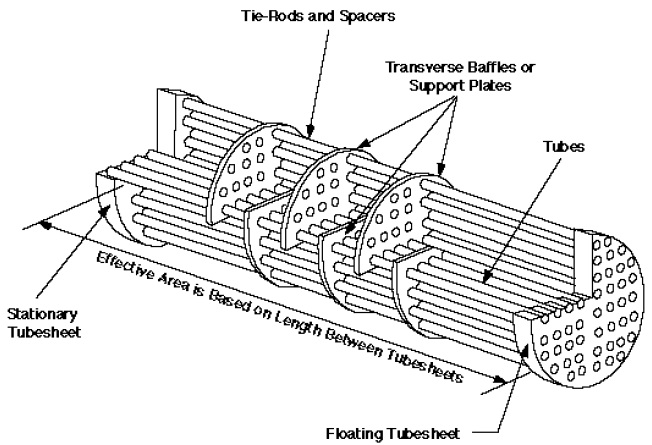Advanced Tube Sheet Design for Heat Exchangers
When designing heat exchangers, tube sheet design stands as a critical component for ensuring structural integrity and efficient thermal performance. Though often overlooked, the tube sheet plays a pivotal role in optimizing heat transfer while maintaining safety and longevity. This article dives deep into the design complexities of tube sheets, addressing material selection, design considerations, and innovative practices in modern engineering.
Understanding Tube Sheet Design: The Basics
A tube sheet is a flat plate used to anchor multiple tubes within heat exchangers. Its where the tubes are welded or expanded to ensure a secure and leak-free connection, enabling effective heat transfer between the fluids. The proper design of the tube sheet is vital for the heat exchangers overall performance and durability.
Key Points to Consider:
- Material Selection: Common materials include carbon steel, stainless steel, and alloys, but advancements in composite materials are beginning to show promise in certain specialized applications.
- Stress Considerations: Tube sheets must endure various stresses, from internal pressure to thermal expansion. A well-designed tube sheet accounts for these forces, ensuring the tubes remain securely anchored over the life of the exchanger.
- Thermal Expansion: Managing differential thermal expansion between the tubes and tube sheet material is crucial for preventing fatigue and cracks.
Critical Design Factors for Tube Sheets
-
Stress Analysis and Load Distribution Tube sheets are subjected to several forces: pressure from internal fluids, thermal expansion from varying temperatures, and mechanical stress during operations. A successful tube sheet design ensures that these forces are uniformly distributed across the surface. Engineers use sophisticated stress analysis tools to predict how the material will behave under operational conditions.
-
Hole Size and Spacing The hole size and spacing must allow for a balance between maximum fluid flow and tube security. Too small a hole may restrict fluid dynamics, while too large can compromise the structural integrity of the heat exchanger. Optimization of hole pattern and spacing is crucial to prevent tube sheet deformation or failure.
-
Welding and Tube Expansion Techniques Modern tube sheet designs use advanced welding techniques, such as laser welding, and tube expansion methods like mechanical and hydraulic expansion to ensure the highest possible bond between tubes and the sheet, enhancing the overall safety of the heat exchanger.
-
Corrosion Resistance Due to the harsh operating environments of many heat exchangers, corrosion resistance is another vital design element. Tube sheet material must be selected based on its ability to withstand specific environmental conditions, including temperature extremes, exposure to aggressive chemicals, and high pressure.
Innovations in Tube Sheet Design
The landscape of tube sheet design is evolving with technology. From advanced simulations and CAD tools to the use of high-performance materials, innovations are pushing the boundaries of heat exchanger design.
- Finite Element Analysis (FEA): Engineers use FEA software to simulate and analyze tube sheet behavior under a range of stress and thermal conditions. This leads to more accurate designs, reducing the risk of failure during operation.
- Additive Manufacturing: In some advanced applications, 3D printing is being explored for creating customized tube sheets that are optimized for specific operational requirements, leading to more efficient designs with reduced material waste.
Common Challenges in Tube Sheet Design and How to Overcome Them
Despite its importance, tube sheet design comes with a range of challenges:
- Fatigue Resistance: Tube sheets face constant fatigue from thermal cycling and pressure fluctuations. To combat this, engineers are increasingly using fatigue-resistant materials and adopting design methods that reduce stress concentrations around the tube holes.
- Manufacturing Precision: Even slight deviations in tube sheet hole placement can lead to performance issues. Precision manufacturing techniques such as CNC machining and laser cutting help achieve the necessary accuracy for optimal design.
Best Practices for Tube Sheet Design
- Collaborative Design Approach: Work with material engineers, thermodynamics experts, and stress analysts to develop a design that balances all factors, from thermal performance to mechanical stability.
- Simulation and Prototyping: Use advanced simulation tools to test the design before manufacturing the final product, reducing the likelihood of design errors.
- Regular Maintenance and Inspection: Tube sheets should be inspected regularly during the heat exchanger’s lifecycle to identify early signs of wear or failure, ensuring long-term performance.
The tube sheet design is a crucial yet often underappreciated element in heat exchanger technology. As materials, tools, and techniques continue to evolve, tube sheets will become even more robust, efficient, and cost-effective. By focusing on material selection, stress analysis, and innovative design practices, engineers can significantly enhance the performance and durability of heat exchangers, ensuring they meet the demands of modern industries.

Tube Sheet Design
For more information on tube sheet and to explore the various models available, dont hesitate to contact us. Our team of experts can help you select the best solution tailored to your needs.

